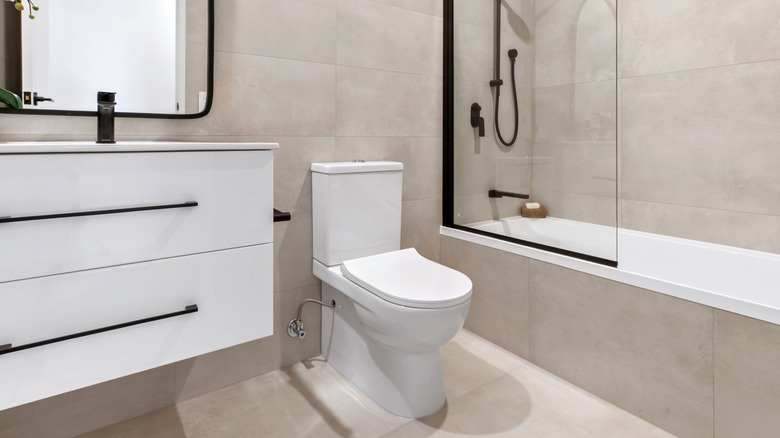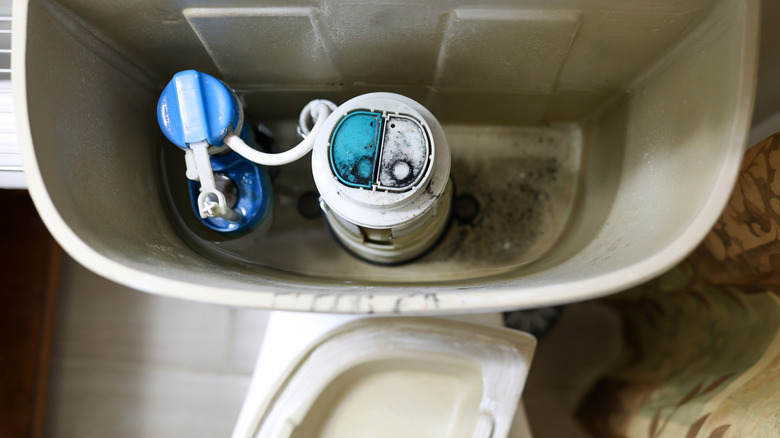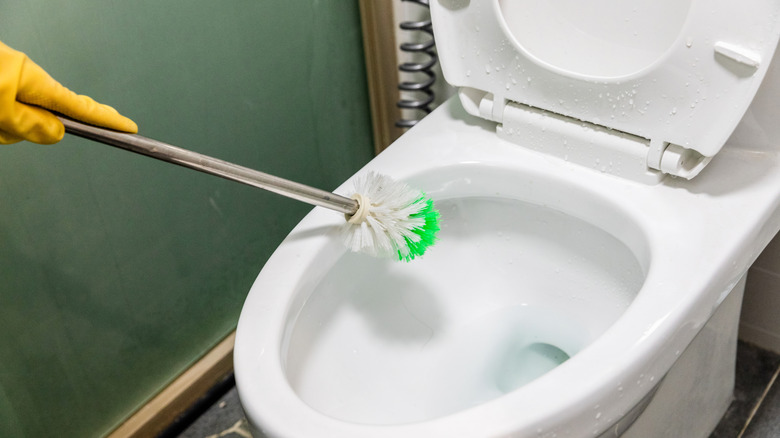How To Know If Mold Is Hiding In Your Toilet
We may receive a commission on purchases made from links.
Rain tapping on your windows during a thunderstorm feels soothing. Bees hovering over fragrant lavender in your yard evoke a sense of peace. But bring those same elements inside your home, and they become a serious problem. Mold is no different. Like the world outside your window, it's a part of nature, too. Outdoors, it helps decompose organic matter. But the same mold inside your home can compromise your immune system and cleanliness. Damp places are an ideal environment for their growth, and your bathroom provides just the right conditions for them to land and multiply. While you might expect to see it in damp corners like around the sinks, your toilet can be among the unexpected places where mold may be lurking. If you notice a musty smell that refuses to budge, dark mold specks, and experience unexplained sneezing and coughing, chances are you're dealing with mold.
Since the toilet bowl is the most visible part, we naturally notice mold here first, but it typically starts in the tank. That's even more concerning because your tank is a closed system with minimal air exchange. Put simply, it's not easy for spores to make their way in. So, when they do and start growing, it indicates the presence of high levels of mold spores circulating in your home's air.
Signs you have mold in your toilet
The first telltale sign of mold is usually what you smell. Primarily because you notice your toilet only once you're close enough to spot visible signs of mold, but when it comes to smell, it greets you the moment you set foot inside the bathroom. An earthy odor that seems to linger around is often the earliest warning that mold is growing somewhere nearby.
The next thing to pay attention to is your toilet tank. Mold appears in the form of a fuzzy texture along the inner walls or waterline. The colors may vary from pink and purple to even white, but green and black are among the most common types of mold.
How your body reacts is another sign. If you don't normally deal with sneezing and mild congestion, but these symptoms start to appear out of nowhere, your toilet mold might be to blame. It's thriving because you're either not cleaning your toilet enough or not using it enough. An unused toilet means stagnant water has been sitting for too long, which is exactly what mold needs to thrive.
Easy ways to get rid of mold
Mold is an issue for almost half of US homes, so if you spot it in your toilet, know that you're not alone. You just need to deal with it as soon as possible to keep it under control. To begin with, prevention is always better than a cure. So, keep your indoor humidity in check. The ideal range is between 30% and 60%, with 55% being the sweet spot. Use a quality dehumidifier to keep dampness at bay. Make sure you track humidity levels now and then with a simple hygrometer. It's surprisingly accurate, and you can easily find one for $8, like the ThermoPro TP49 Digital Hygrometer.
Now, when it comes to the existing mold, consider starting with your toilet tank. Pour white vinegar into the tank a few times a week. This will prevent mold growth. Further, you can use bleach to eliminate visible mold. Mix a cup of bleach in 5 gallons of water. Carefully pour the solution into a spray bottle. Then, spritz the affected area. Let it sit for about 10 minutes, and the mold will gradually start to disappear. For stubborn spots, consider using a stiff-bristle cleaning brush. Once done, rinse thoroughly. If the problem persists, do not hesitate to reach out to a professional. Recurring mold might signal an underlying issue that needs expert attention.


